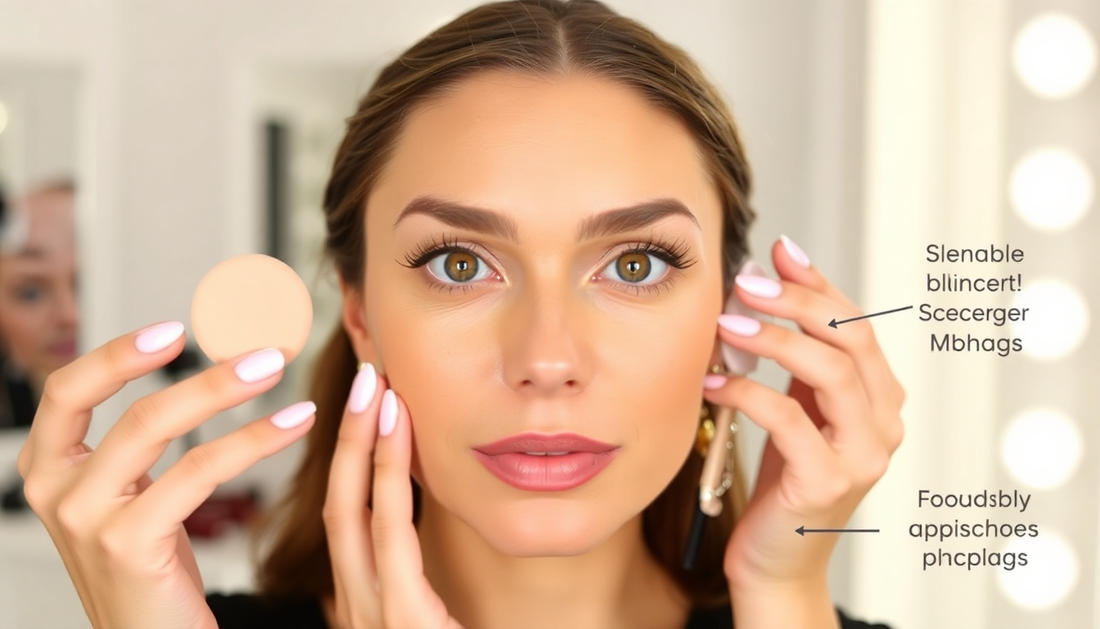
5 Common Mistakes to Avoid When Using Makeup Sponges: Expert Tips for a Perfect Finish
Share
Makeup sponges have become a staple in every beauty enthusiast's arsenal, promising a flawless, airbrushed finish with just a few bounces. However, even the most seasoned makeup lovers can fall victim to common sponge-related mistakes that can sabotage their look. As the founder of Glowtalebeauty, a clean beauty brand beloved by Gen Z, I've seen it all – from sponges that are too dry to improper storage techniques.
In this blog post, I'll share the top 5 mistakes to avoid when using makeup sponges, along with expert tips to ensure you achieve a perfect, long-lasting makeup application every time. Get ready to say goodbye to streaks, cakiness, and uneven coverage for good!
Mistake #1: Incorrect Dampening
One of the most crucial steps in using a makeup sponge is properly dampening it before application. The right amount of moisture is essential for allowing the sponge to pick up and seamlessly blend product onto the skin.
If your sponge is too dry, it will absorb too much product, leaving you with a patchy, uneven finish. On the other hand, an overly wet sponge can dilute your makeup, causing it to slip and slide around the face.
To get it just right, run your sponge under lukewarm water and gently squeeze out any excess moisture until it's damp but not dripping. The sponge should feel slightly bouncy and malleable in your hand. This will ensure the perfect balance of product pickup and blendability for a flawless look.

Mistake #2: Improper Blending Technique
Many people make the mistake of simply dragging their makeup sponge across the face, which can lead to streaks, uneven coverage, and a cakey appearance. The key to seamless blending is to use a gentle "bouncing" motion.
Start by dabbing the sponge onto the skin, pressing and rolling it to pick up product. Then, instead of swiping, use a bouncing or stippling motion to blend the makeup outward from the center of the face. This technique helps to push the product into the skin for a natural, airbrushed finish.
Avoid excessive rubbing or wiping, as this can disturb the makeup and cause it to break down prematurely. Remember, less is more when it comes to sponge blending – a light, gentle touch is all you need.
Mistake #3: Not Cleaning Sponges Regularly
Makeup sponges can be a breeding ground for bacteria if not properly cleaned, which can lead to breakouts, skin irritation, and even eye infections. It's crucial to clean your sponge after each use to remove any lingering product, oils, and impurities.
The best way to clean a makeup sponge is to run it under warm water and gently massage a small amount of gentle, fragrance-free soap or cleanser into the surface. Avoid using harsh, drying cleansers, as these can compromise the sponge's texture and performance. Rinse thoroughly and squeeze out any excess moisture before allowing the sponge to air dry completely.
Aim to clean your sponge at least once a week, or more frequently if you use it daily. Proper sponge maintenance will not only keep your skin healthy but also extend the life of your beauty tool.
Mistake #4: Using the Wrong Side of the Sponge
Makeup sponges are designed with different edges and surfaces to serve specific purposes. Failing to use the appropriate side can result in uneven coverage, unwanted product buildup, and a less-than-flawless finish.
The flat, broad side of the sponge is best for applying and blending liquid or cream products, such as foundation, concealer, and cream blush. The pointed tip is ideal for targeting hard-to-reach areas, like around the nose and under the eyes. The rounded edges can be used to blend out product seamlessly along the hairline and jawline.
Pay attention to which side of the sponge you're using and match it to the specific area or product you're working with. This will help you make the most of your makeup sponge and achieve a polished, professional-looking result.

Mistake #5: Storing Sponges Incorrectly
Proper storage is essential for maintaining the integrity and longevity of your makeup sponges. Leaving them in a damp, enclosed space can lead to the growth of mold and bacteria, which can then transfer to your skin and cause breakouts.
Instead, store your sponges in a well-ventilated area, such as a mesh bag or open container. Avoid sealing them in an airtight package or leaving them in your makeup bag, as this can trap moisture and create the perfect environment for microbial growth.
Additionally, be sure to replace your sponges every 2-3 months, or sooner if you notice any signs of wear and tear, such as discoloration or a change in texture. Investing in high-quality, durable sponges can also help extend their lifespan and ensure you always have a fresh, clean tool on hand.
By avoiding these common mistakes, you'll be well on your way to achieving a flawless, long-lasting makeup look with the help of your trusty makeup sponge. Remember, proper technique and maintenance are key to unlocking the full potential of this versatile beauty tool. Happy sponging!
https://glowtalebeauty.com/products/beakey-5-pcs-makeup-sponges-latex-free
